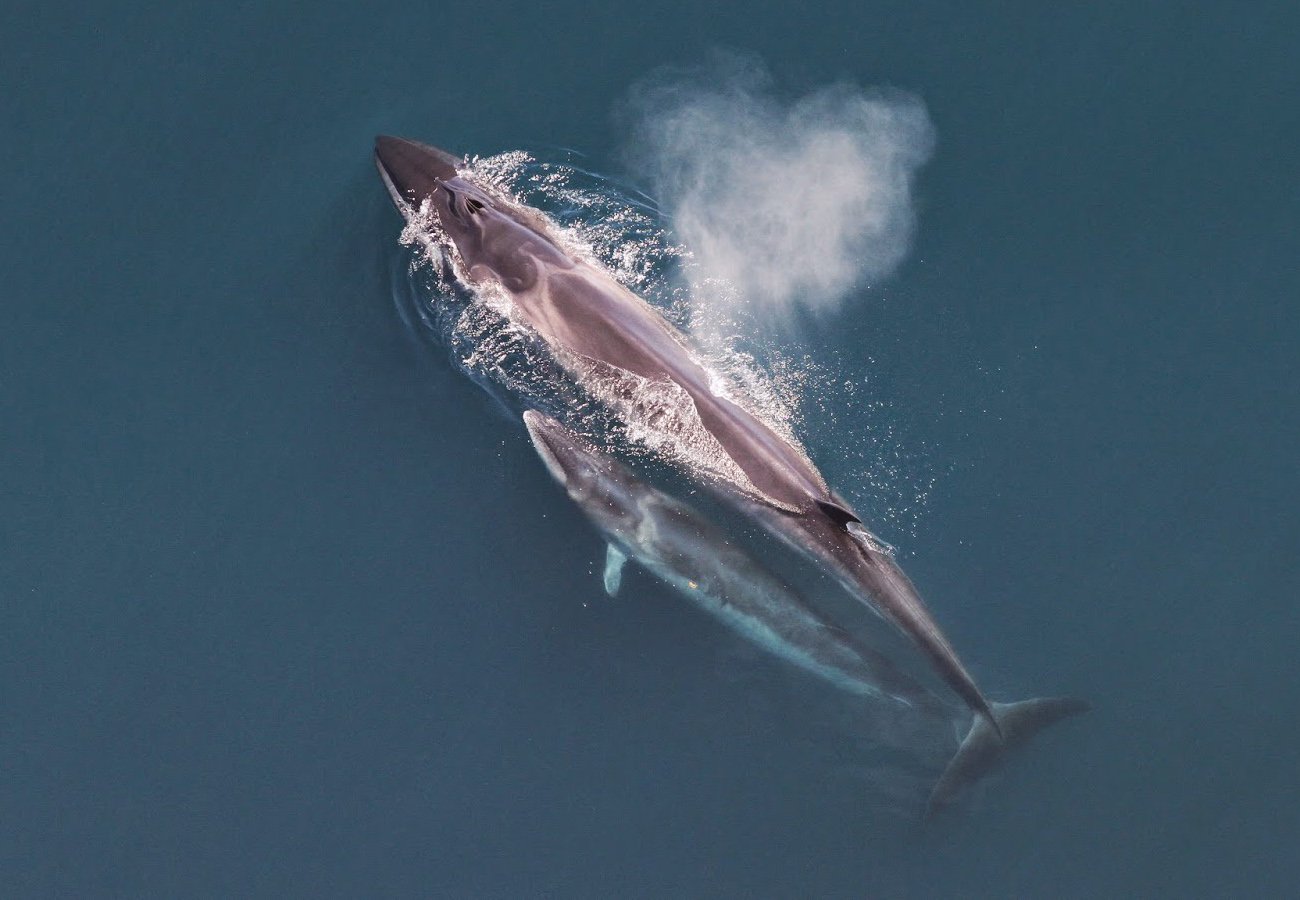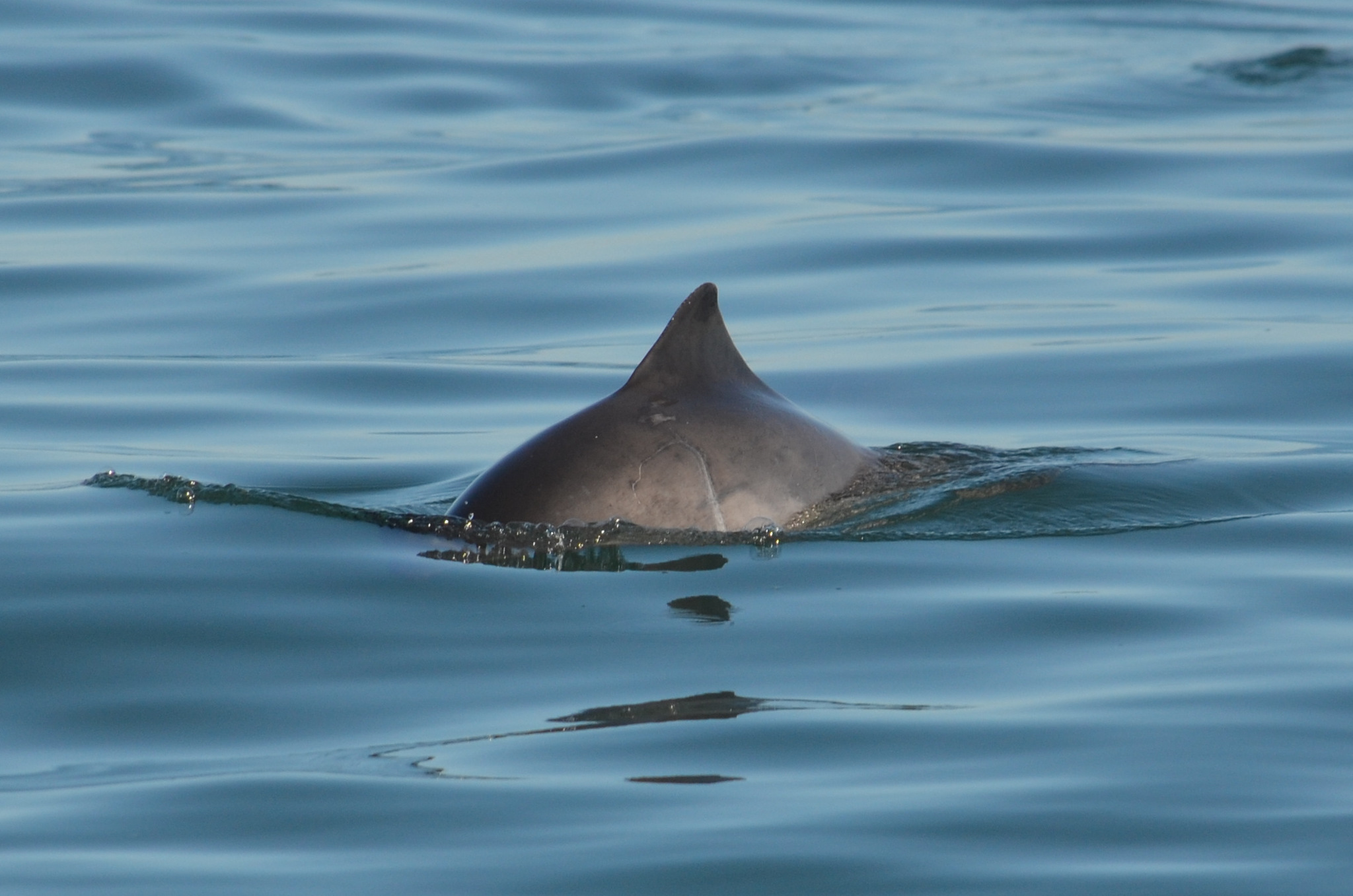Sowerby’s beaked whale (Mesoplodon bidens) is one of the least known mammal groups. A member of the beaked whale family Ziphiidae, this species was the first of the family to be discovered and described. The scientific name of the species, bidens, refers to the two teeth that are found about halfway down the lower jaw of adult males and comes from the Latin words bi, for two, and dens, meaning teeth.
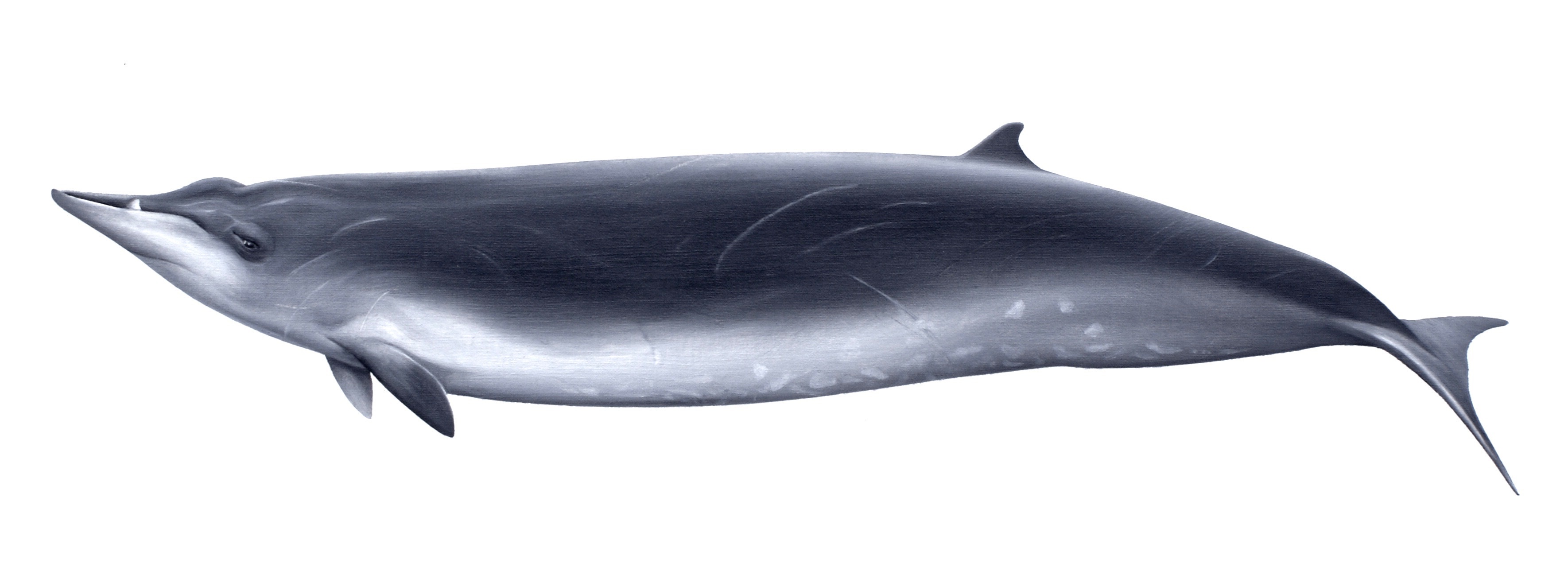
Description
This species of whale measures between 4.5 and 5.5 m and weighs between 1,000 and 1,300 kg. The backside is slate-grey to bluish-grey, with light grey and white speckling, contrasting with their lighter underside, and they have less visible scarring than other species of beaked whale. The body of a Sowerby’s beaked whale is very streamlined, with a long, slender beak and a small head with a singular blowhole atop a bulge called the melon that is used for echolocation and communication. The dorsal fin is small, slightly hooked, with a rounded tip and is located around two-thirds down the whale's back. The flippers are long and thin compared with those of other beaked whales, and there is no center notch in the fluke. Males are generally larger than females and possess a pair of teeth on their arched lower jaw that is always visible, unlike the teeth in females and juveniles, which remain below the gum.
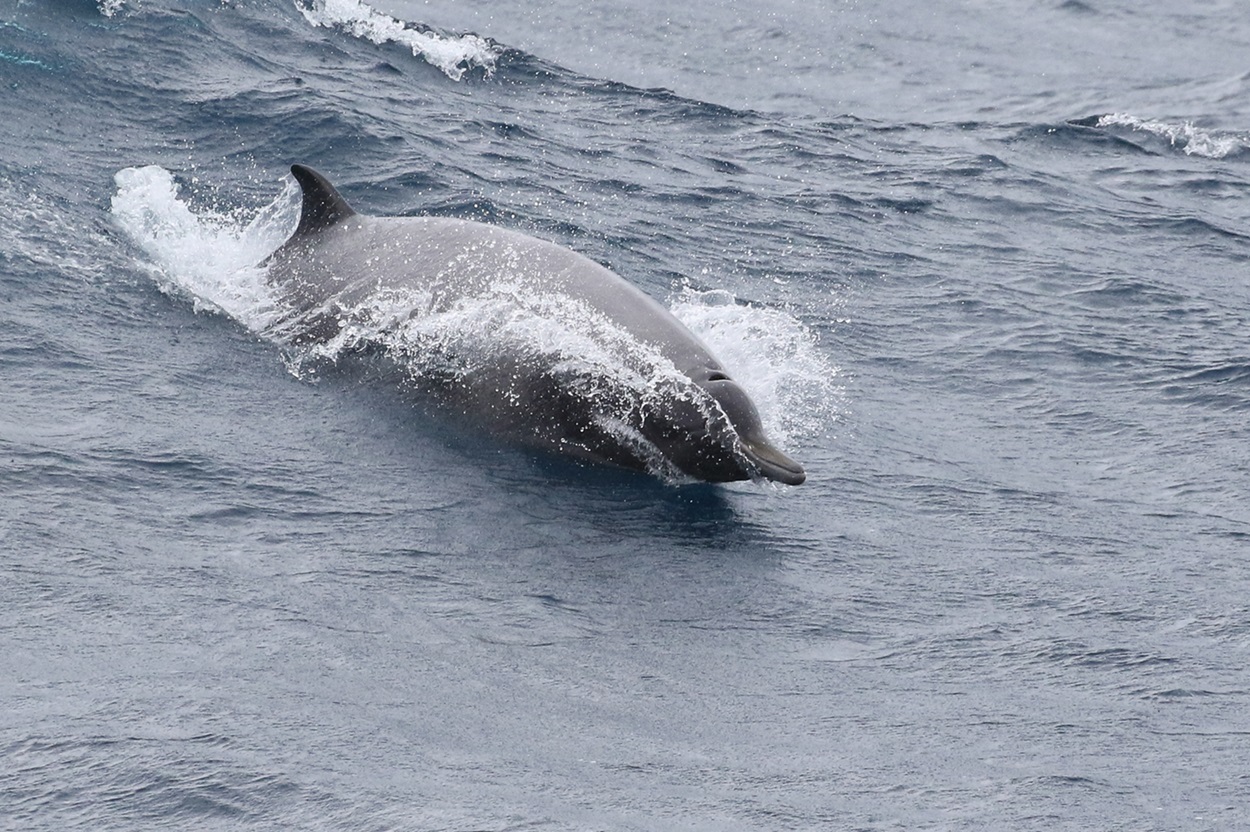
Distribution
As one of the species of beaked whale with the widest range in the North Atlantic Ocean, Sowerby’s beaked whales prefer deep waters near the continental shelf edge and slope and are most often found in areas where the depth ranges from around 200 to 1,500 m. These whales prefer cold, temperate and subarctic waters and have been spotted near the ice pack. Along the coast of eastern Canada, these whales range from Notre Dame Bay in Newfoundland down to southern Nova Scotia. However, these whales are more common in the eastern Atlantic, where more sightings and strandings have occurred compared with the western Atlantic.
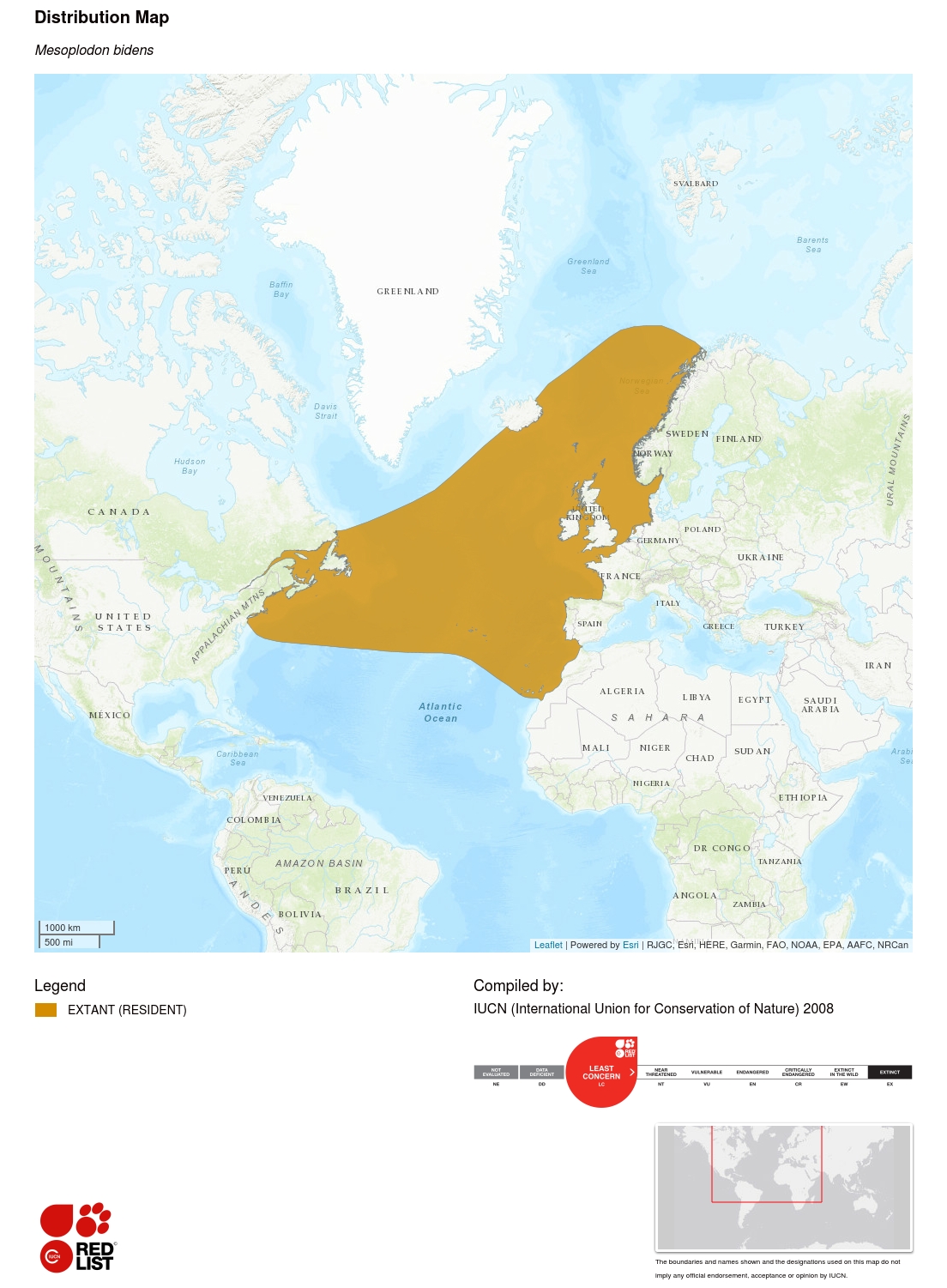
Behaviour and Diet
There is a lack of research on Sowerby’s beaked whales, and this is due to their cryptic and skittish behaviour. These whales are rarely sighted; they can be found individually or in small groups of three to ten whales. Their dives typically last 10 to 15 minutes, though dives of over 28 minutes have been recorded. Upon surfacing, Sowerby’s beaked whales will lift their head out of the water at a sharp 45-degree angle and blow in a very inconspicuous fashion, making them difficult to notice and observe. During their dives, the beaked whales hunt using echolocation in search of prey. Their diet includes small, deep-sea fish and cephalopods such as squids, which they consume by suction feeding, in which they rapidly open their mouth underwater, creating a rapid inflow of water in the whale’s mouth that sucks their prey in. Although they are typically very discreet at the surface, there have been reports of Sowerby’s beaked whales demonstrating more conspicuous behaviours such as tail-slapping, breaching and spy-hopping at the surface. Typically, however, these animals stay clear of vessels.
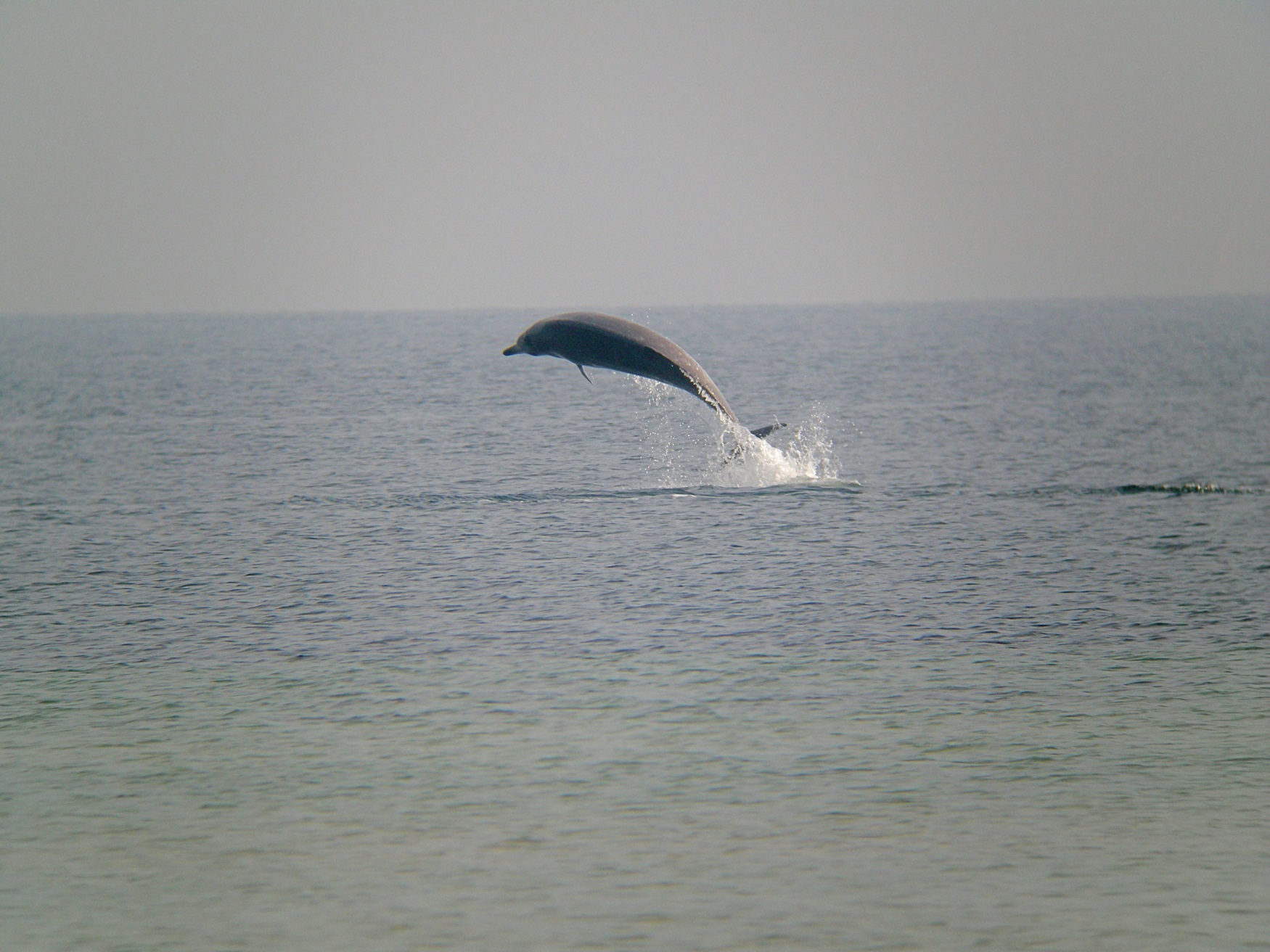
Reproduction and Development
Although very little is known about the mating systems of Sowerby’s beaked whales due to their cryptic nature, research based on stranded whales has helped determine that these whales reach sexual maturity around seven years old, and their breeding season is thought to occur from late winter until spring. After 12 months of gestation, mothers give birth to a single calf that is 2.4–2.7 m in length and weighs about 185 kg. The calves have a darker colouration than the mature whales and are nursed and protected by their mother for an unknown period during their juvenile life.
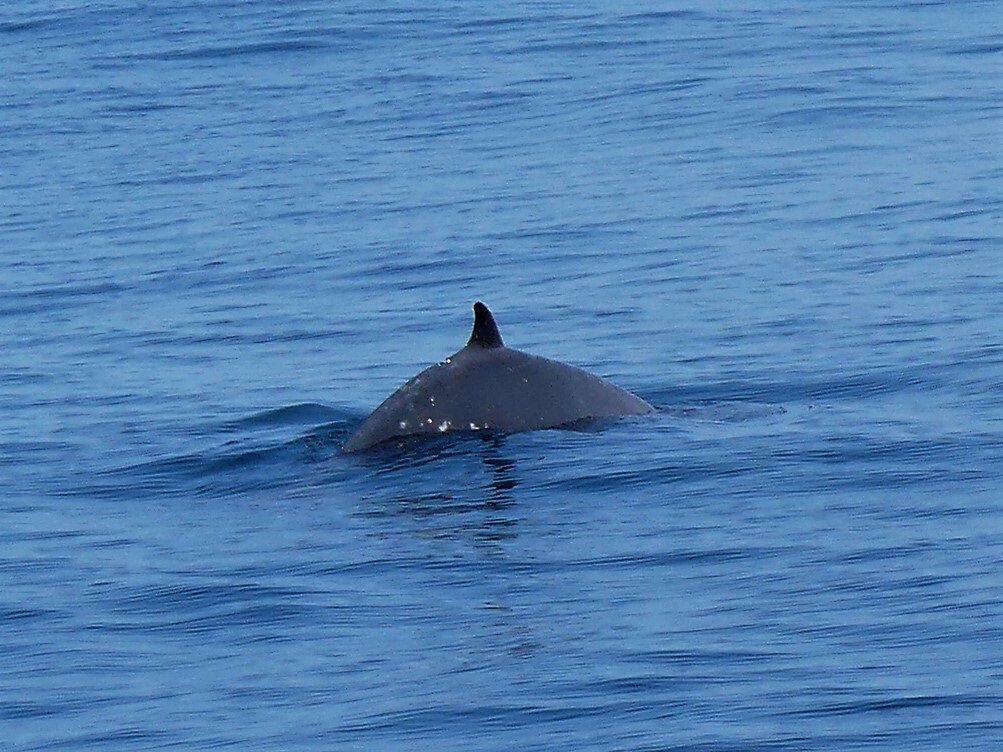
Threats and Conservation
First listed as a species of Special Concern by the Committee on the Status of Endangered Wildlife in Canada (COSEWIC) in 1989, the Sowerby’s beaked whale’s status has been reconfirmed after two more separate assessments in 2006 and 2019. A major threat to these animals is the use of intense underwater sounds like mid-frequency sonar and seismic surveys. These types of anthropogenic noise pollution are linked to mass strandings of beaked whales, and they interfere with the whales’ use of echolocation for hunting and communication. Sowerby’s beaked whales are the most commonly stranded species of Mesoplodon and have been found in group strandings of up to six whales all year round. These whales are also threatened by plastic pollution, since they have been found to ingest plastics. Sowerby’s beaked whales also risk entanglement in fishing gear and are vulnerable to chemical pollution. Although no natural predators have been observed, it is assumed that killer whales and large sharks prey on these whales.

 Share on Facebook
Share on Facebook Share on X
Share on X Share by Email
Share by Email Share on Google Classroom
Share on Google Classroom


